
Ford Tourneo Connect Review

Introduction
With the death of the Ford S-Max and Galaxy models, the Blue Oval is looking decidedly short of seven-seat options. In fact, short of choosing the Transit Custom-based Tourneo Custom nine-seater, the only even remotely car-like choice will be the Tourneo Connect. Also based on a van, albeit a much smaller one, it offers customers enormous practicality without entirely forsaking the creature comforts to which we’ve become accustomed.
That’s partly achieved by basing the Tourneo Connect on a van. In this case, it’s the first instalment in a joint venture between Ford and Volkswagen, which sees the Tourneo Connect share pretty much everything but styling and a badge with its closest rival, the Volkswagen Caddy. Is the move an inspired one, or will the new Tourneo Connect fail to feel different enough?
Select's rating score* - 3.7 / 5
At a Glance
Although the relationship between the Caddy and the Tourneo Connect isn’t immediately obvious from the front, it becomes more apparent as you look around. The silhouette is the same, the windows are the same and the attitude is much the same. But Ford has put its own stamp on the design, particularly with the Active model (below) that sits a little higher and looks a bit more rugged. For the image-conscious, that will be the Tourneo of choice.
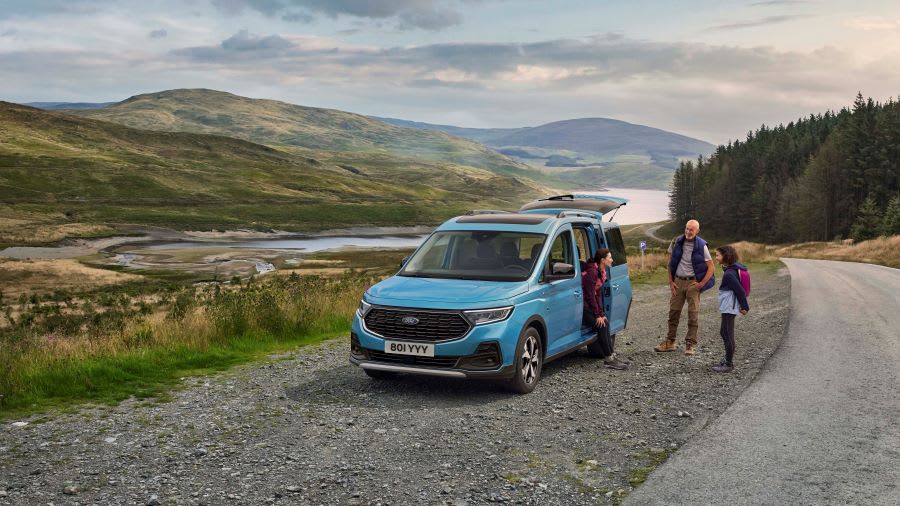
Inside, the Tourneo Connect is even more similar to the Caddy, with the same steering wheel, gear selector and dashboard design. Even the touchscreen is a lightly redesigned Volkswagen system. But all that means is the Tourneo looks and feels more premium and more modern than its predecessor, and that should sit well with customers.
As will the way the Tourneo works. It’s a great family bus, and it’s offered with a choice of efficient engines. Performance is limited, but this isn’t trying to be sporty – it’s just an honest and practical way of moving people and their things from A to B. And if you opt for the diesel, it’ll prove reasonably efficient, too.
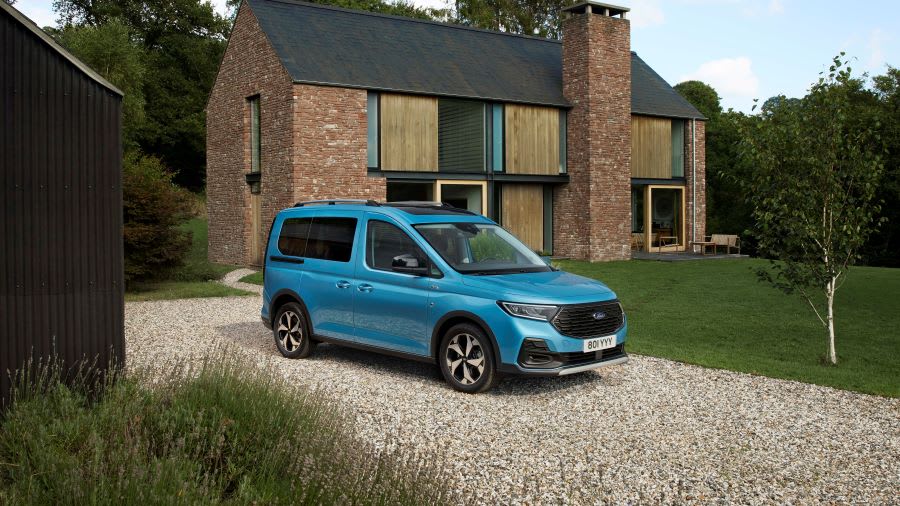
Key Features
Cars such as this naturally live and die on the basis of their practicality, and the Tourneo Connect is certainly spacious. Not only does it have flexible seating that allows customers to configure the cabin to suit their needs, but there’s simply an enormous volume of air inside the cabin. Every passenger has plenty of headroom, while rear leg-room is respectable if not especially plentiful – even if you have people in the third row of seats. Kids will certainly have more than enough space. And if you want to pack in things instead of people, remember the Tourneo is essentially a van, and therefore incredibly spacious.
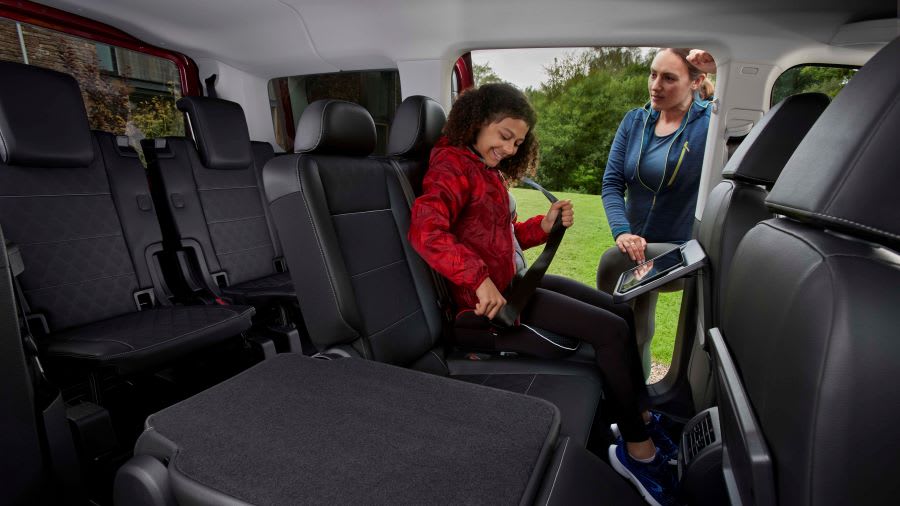
But there’s more to a family bus than simply hauling lots of stuff. The Tourneo Connect also has to live up to the stresses and strains of family life, which can quite literally test cars to their breaking point. However, it seems the new Tourneo Connect is better built than its predecessor, thanks in part to the influence of Volkswagen. Everything feels beautifully slotted together and better built than pretty much anything else in the class, except, perhaps, the VW Caddy.
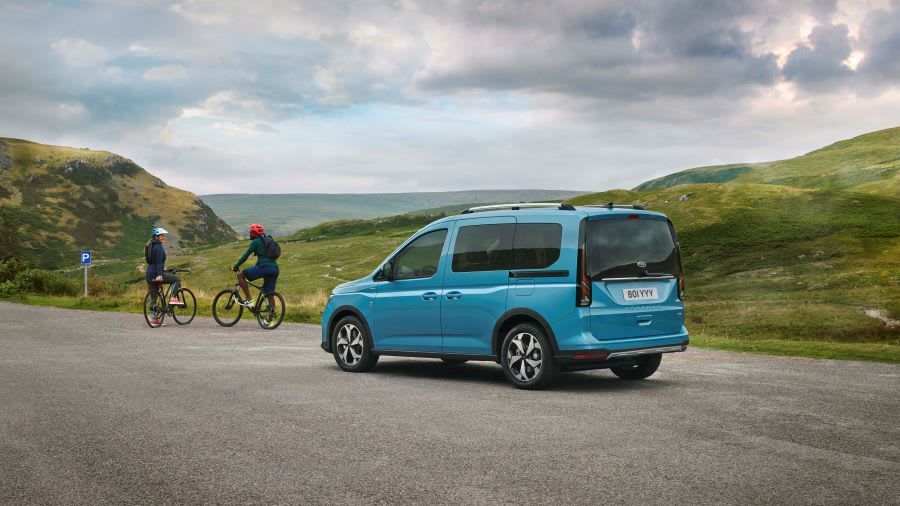
Performance & Drive
The Tourneo Connect is available with a choice of two different powertrains, neither of which is especially ground-breaking. The basic option is a 1.5-litre petrol engine that produces 114hp, or you can have a 2.0-litre diesel that churns out 122hp. Both engines are offered with a choice of manual and automatic gearboxes, and both drive the front wheels alone.
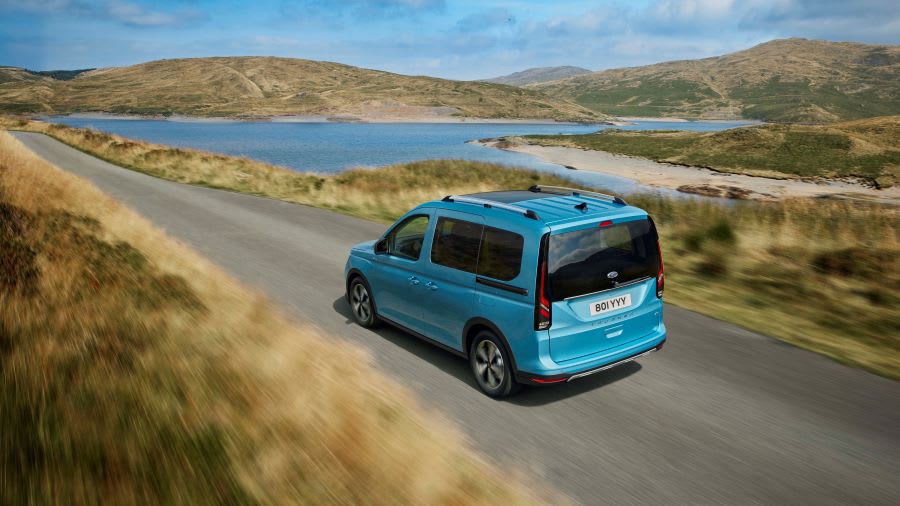
For many, the diesel engine will be the most appealing choice, partly because of its slight power advantage, and partly because of its efficiency. However, the diesel isn’t really that much punchier than the petrol engine, despite the figures. Neither engine gives the Tourneo Connect particularly spectacular performance, but both are quick enough to make adequate progress and keep up with traffic.
The diesel engine doesn’t necessarily offer much refinement – it’s a bit loud and lumpy – but it has a chunky feel to it that somehow suits the vehicle. Yes, it’s a bit agricultural, but it does the job with relative ease. The automatic gearbox suits the Tourneo, too, sacrificing some performance for a more relaxed driving experience. It’s helped by the fact the transmission itself is smooth and slick in almost any situation, whether that’s around town or on the motorway.
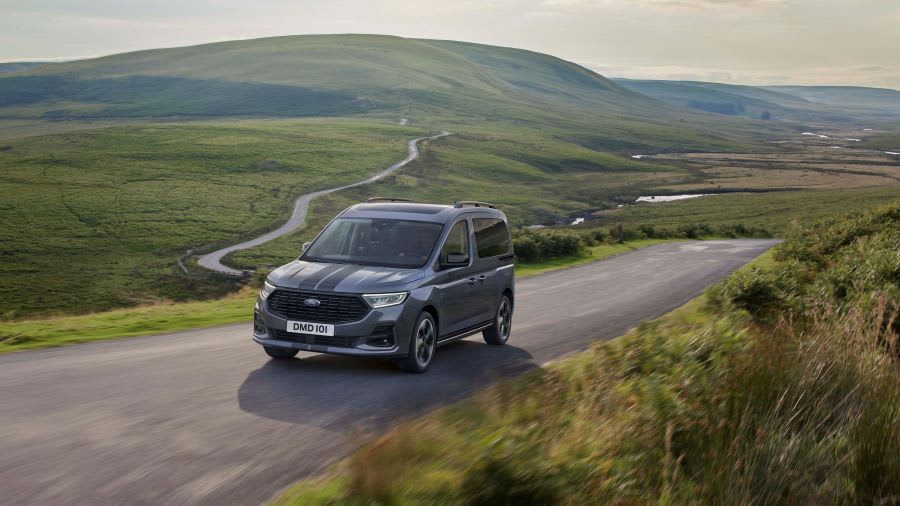
And that sums up the way the Tourneo Connect drives. It isn’t sporty in any way, and though Fords are fabled for their handling, the Tourneo isn’t especially agile either. Instead, it’s built for driving around town, with surprisingly strong visibility and light controls that make it as easy to manoeuvre as possible.
The only real issue, then, is the ride. Because the Tourneo has been set up to carry heavy loads and up to seven passengers, the suspension has to be strong, and that means there are compromises in terms of comfort. It isn’t too jiggly or jarring, but the Tourneo does thud into bumps a bit, which means it’s a good job the seats are so well cushioned. And when you get on the motorway, a slightly nuggety ride around town will be a distant memory.
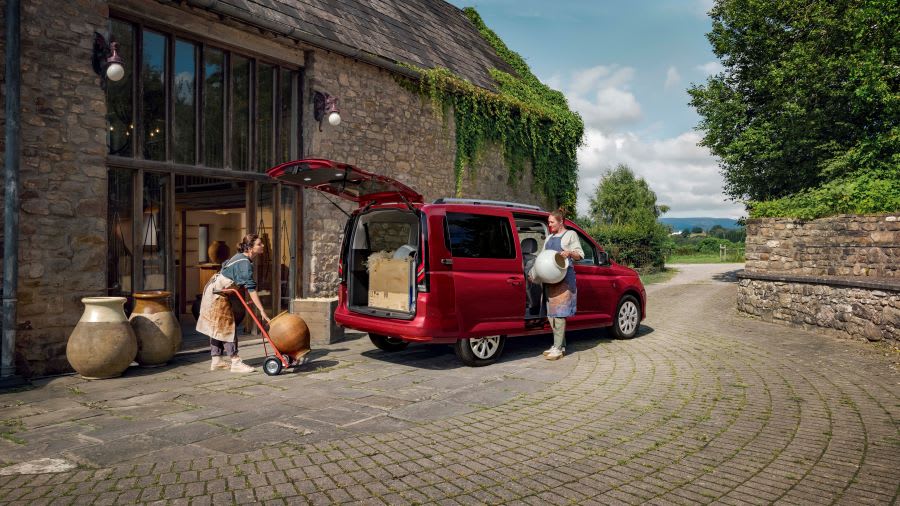
Running Costs & Emissions
To the surprise of absolutely nobody, the diesel is clearly the most economical engine, but that doesn’t necessarily mean it’ll be the cheapest to run. Because diesel is more expensive than petrol, and the 1.5-litre petrol engine already returns more than 40mpg on the official economy test, the diesel’s 50-odd miles to the gallon will take some time to make a big difference. For those who don’t cover massive mileages, the petrol might work out cheapest.
For company car drivers, however, diesel is the only realistic option. With no hybrid or electric version currently on offer, the lower carbon dioxide emissions of the diesel engine will prove more attractive for those paying company car tax. However, with emissions from 128g/km, the Tourneo still isn’t as cheap to run as, say, the Citroen e-Berlingo.
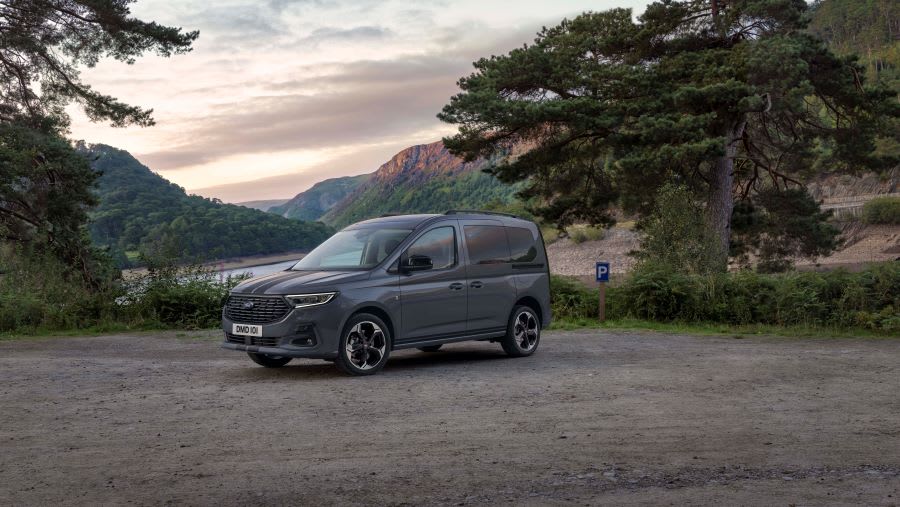
Interior & Technology
Although Ford has tried to differentiate the Tourneo Connect from the Caddy externally, the internal efforts are much less comprehensive. In fact, the Tourneo shares pretty much everything in there with the Volkswagen, from the steering wheel design to the automatic gear selector. The dashboard structure is the same, too, and the centre console is also pretty much identical.
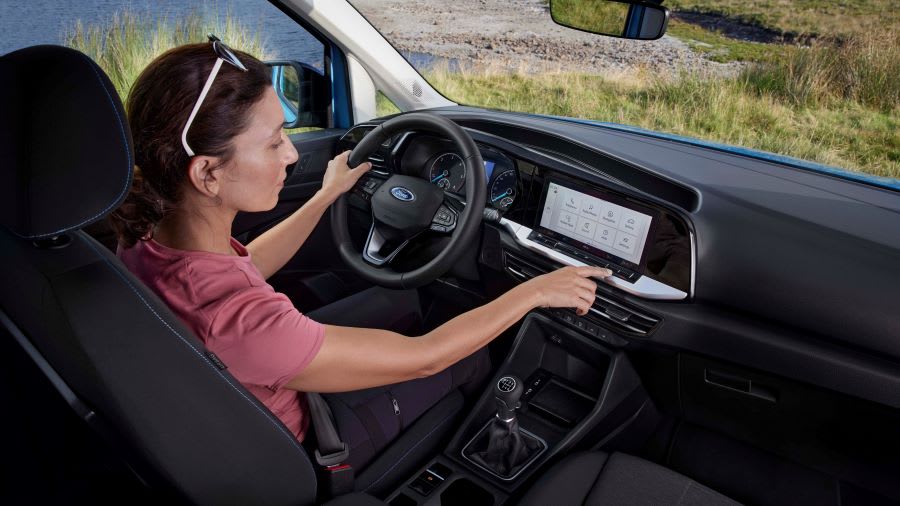
That’s no bad thing, because it means the Tourneo Connect feels much less van-like than ever before, getting plenty of its design straight from the Volkswagen parts bin. But VW has put all those components together beautifully, creating something solid and surprisingly upmarket for a car in this class. It doesn’t feel like a repurposed commercial vehicle, when other vehicles do.
To a degree, it achieves that by dint of its touchscreen infotainment screen, which – you guessed it – is a lightly re-skinned version of the system used in the Caddy. That’s a mixed blessing, because while it’s better than the system in the latest-generation Golf, it still isn’t perfect. Admittedly, the problems aren’t necessarily down to the screen itself – it’s quick enough and it looks pretty good – but more to do with the way it’s used.
Because VW is obsessed with cutting buttons on the dashboard, the Tourneo Connect’s screen is also tasked with controlling the heater controls, and it isn’t really best suited to the task. Both the Tourneo and the Caddy would be much better with conventional heater controls, but instead we’re left with the touchscreen system. It wouldn’t be so bad if climate control was fitted as standard, leaving little need to adjust the temperature, but with manual air conditioning fitted to most Tourneos, the controls take on even more importance.
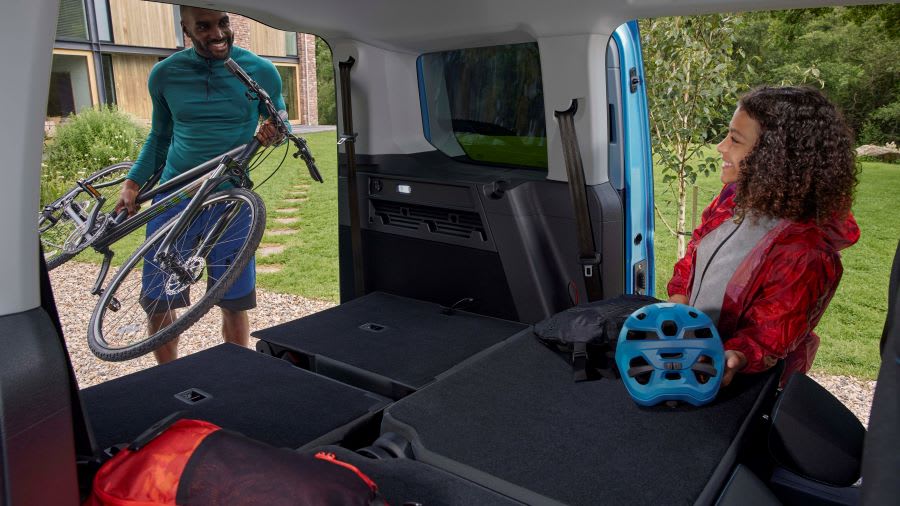
Practicality & Boot Space
Few customers will be surprised to hear the Tourneo Connect is a particularly spacious thing, offering huge amounts of cabin and boot space. Obviously, exactly how much room there is depends on whether you choose the Grand Tourneo Connect or not, but suffice to say everyone should have enough space in the cabin. Headroom is plentiful in all three rows, and there’s ample shoulder room for everyone.
That said, getting into the rearmost seats might be a bit tricky for some, but once you’re in there the space available is adequate. Tall adults might not want to spend too long back there, but they’ll cope for a 15-minute jaunt to the pub. And their luggage will definitely fit in, too – especially in the Grand Tourneo Connect. The whole idea is the seating is flexible, which makes it difficult to calculate the luggage space in different configurations, but there’s cavernous space back there. It’s huge.
The only slight catch is the size of the tailgate required to access that massive space. Because it’s so long, it makes it difficult to open in car parks, particularly if you reverse into spaces. It isn’t the end of the world, but it’s worth keeping in mind.
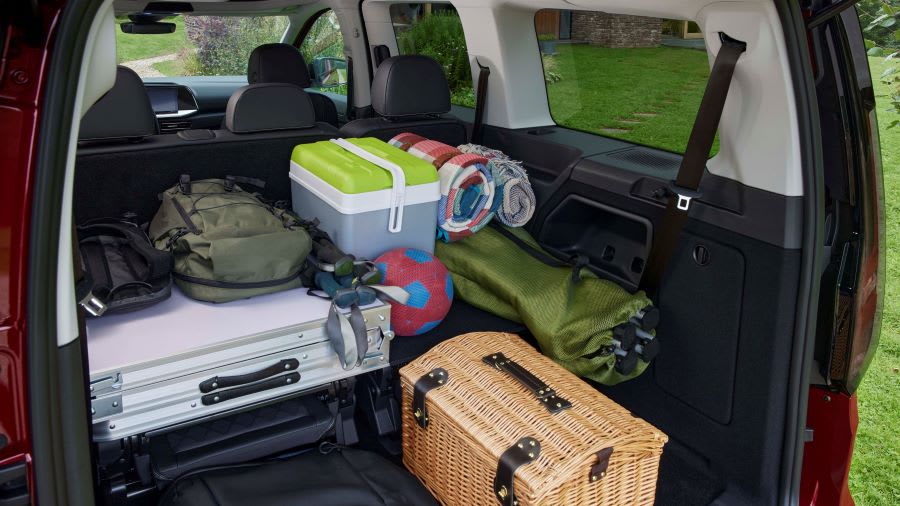
Safety
The Tourneo Connect hasn’t been tested by Euro NCAP, but the closely related Caddy has, receiving a solid five-star score when it was crash-tested in 2021. It didn’t necessarily set the scoreboard alight in any one area, but it did score highly in every area, with 84% and 82% respectively for adult and child occupant protection. Combine that with 69% for pedestrian protection and 79% for safety assistance tech, and the five-star rating was well deserved.
The Ford also comes with all the usual safety kit, including Isofix child seat attachments, front and rear parking sensors and a suite of airbags. It also gets the usual driver assistance features, such as autonomous emergency braking that can slow the car down automatically in a bid to avoid an accident. Lane-keeping assistance is included, too, along with a speed limiter and a driver impairment monitor.
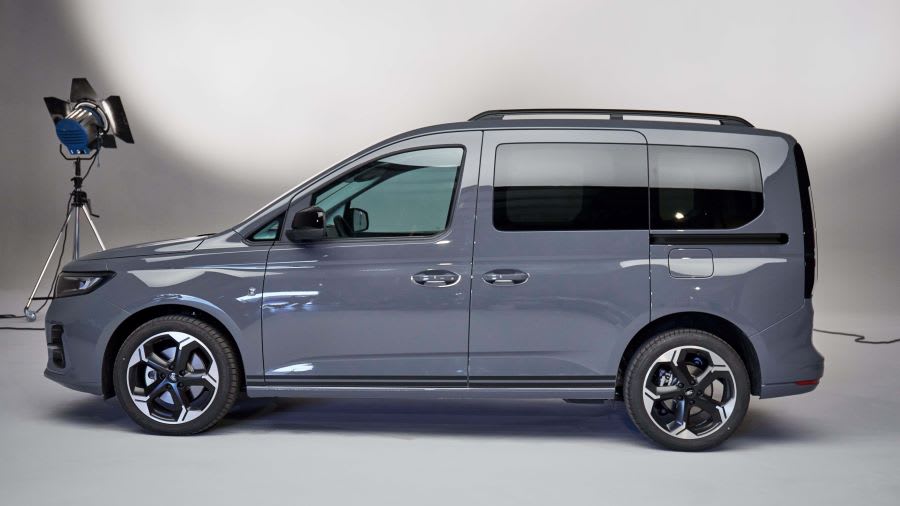
Options
Eventually, the Tourneo Connect will be available with a choice of four different trim levels, but the basic Trend model won’t be available until 2024. When it arrives, it’ll come with a relatively Spartan interior with manual air conditioning and… umm… that’s about it. That said, it does come with front and rear parking sensors, both of which are worth having, and there’s a leatherette-wrapped steering wheel. You get 17-inch wheels, too, even if they are made of steel.
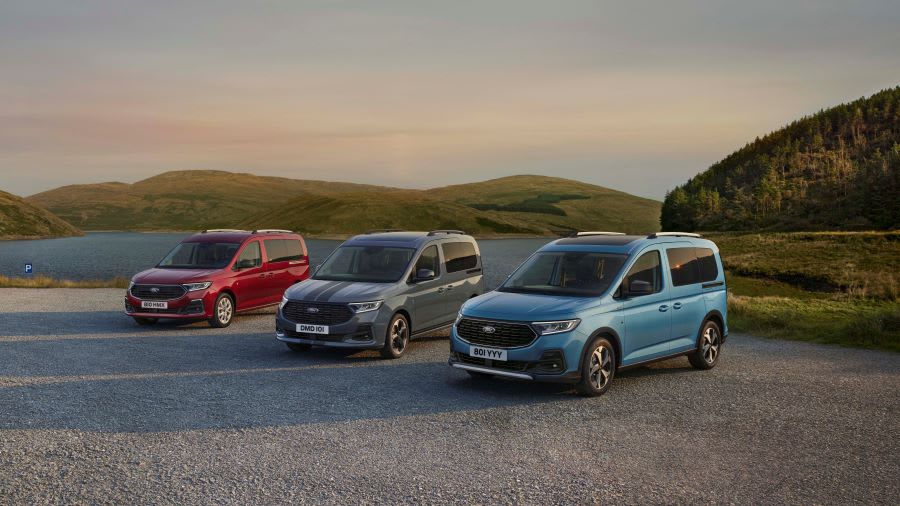
Moving up to the Titanium gets you heated front seats, though, which will be a welcome addition, along with a front seat tray table and leatherette trim on the gear knob. It adds 16-inch alloy wheels, tinted rear windows and more speakers too, as well as keyless engine start with push-button ignition.
Then there’s the Active, which looks a bit more rugged with its body cladding and larger 17-inch alloy wheels, as well as a removable waste bin. And finally, there’s the Sport, with its sportier design, black roof rails and black alloys, as well as a sport stripe kit and a digital instrument cluster.
The options list is a little longer than for some modern cars, and it includes a panoramic roof and heated steering wheel, as well as a detachable towbar coupling and electric windscreen defroster. You can get two-zone climate control and a rear-view camera, too. Then, of course, there are the colours, which include the striking Boundless Blue and the slightly deeper Maple Red.
Finally, there’s the choice of lengths to consider. You can have a ‘standard’ Tourneo Connect, or you can go for the longer Grand Tourneo Connect, with more space inside and a slightly bigger footprint. And, of course, you can choose whether you want your Tourneo to be a five- or seven-seater.
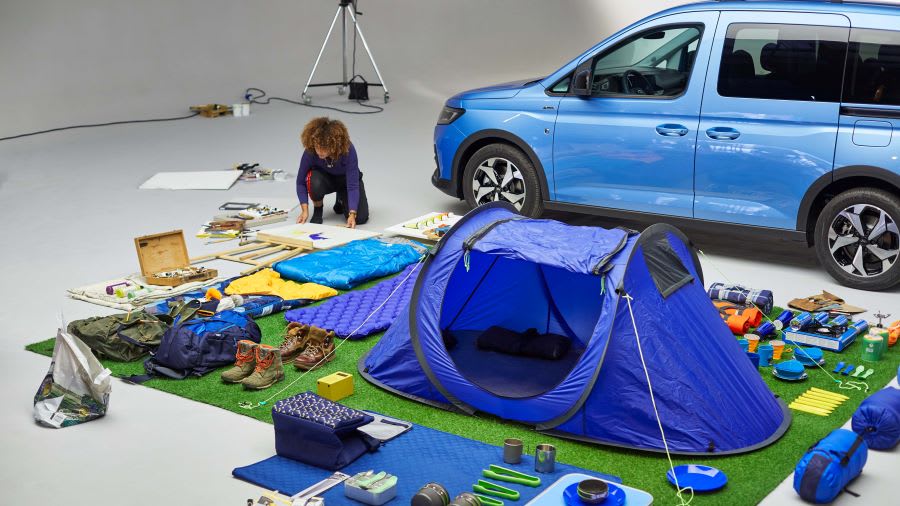
Rival Cars
The Tourneo Connect’s direct rivals have thinned out slightly in recent years, thanks mostly to the fact so many have ditched petrol and diesel engines in favour of electric motors. That’s the way the Peugeot Rifter, Vauxhall Combo Life (below) and Citroen Berlingo have all gone, and while they still have their abilities and their own appeal, the three closely related cars aren’t quite as flexible as they used to be.
.jpg)
But the Ford is differentiated from the Peugeot, Citroen and Vauxhall by more than just its engines. The Tourneo Connect is better built and just as spacious, if not necessarily better to look at. It has better in-car technology, too, despite the insistence on using touch-sensitive switchgear where it really shouldn’t be used.
However, the Ford has one rival that’s more difficult to overcome – primarily because the two vehicles are so similar. The Volkswagen Caddy sits on the same architecture as the Tourneo, and it uses the same cabin design, the same materials and even much the same technology, which leaves very little to separate the two vehicles. We suspect it’ll come down to which vehicle drivers like the look of and which vehicle offers the best lease deals when the time to switch arrives. Either way, customers will be getting a great family car.
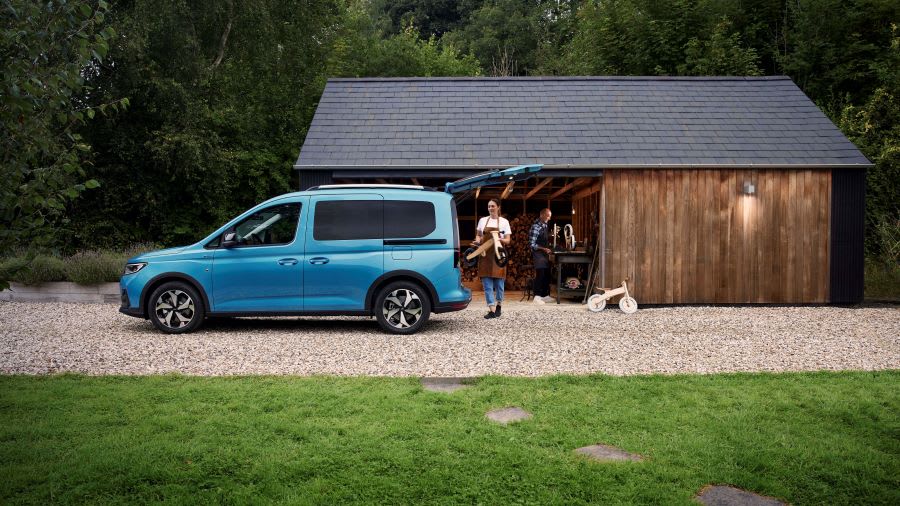
Verdict & Next Steps
At risk of damning the Tourneo Connect with faint praise, this is a vehicle that will never be much more than a tool, and Ford is well aware of that. That’s why it doesn’t even try to match the driving dynamics or the luxury of an S-Max or a Galaxy, but it is still a brilliant family bus, capable of standing up to the rigours of daily life and swallowing all the junk that goes with it. Although some may like the image of the Active models, it isn’t necessarily a desirable car, but it will slot into your life perfectly, fulfilling pretty much every role you will ever ask of it. For a family car, praise does not come much higher.
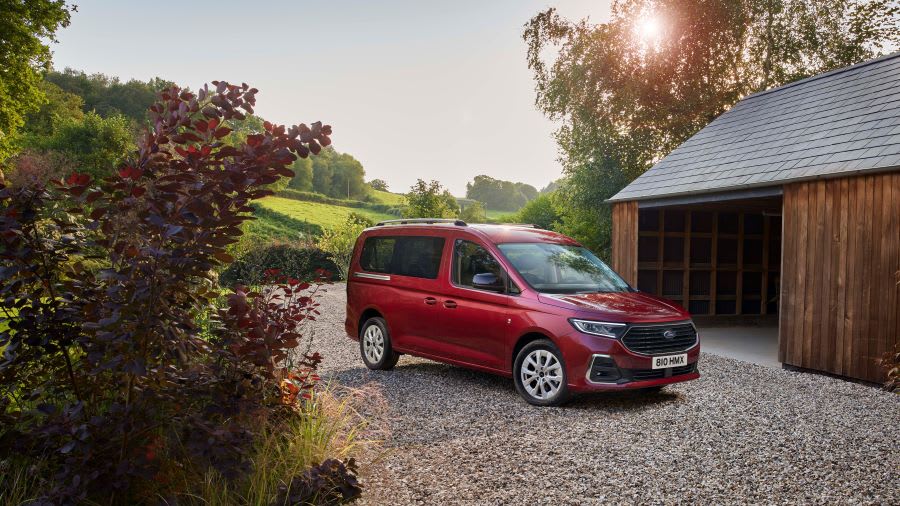
Where to next?
View our latest Ford Tourneo Connect deals - from just £414.83 per month inc VAT**
Looking for a great leasing deal? Check out our incredible range of Special Offers
New MPV? Read our latest Car Reviews and find the right model for you
Want to know more about leasing? Take a look at our comprehensive Leasing Guides
Interested in everything motoring? Why not catch up on all the latest Car Leasing News.
*Score based on Select’s unique meta score analysis, taking into account the UK’s top five leading independent car website reviews of the BMW 2 Series Active Tourer
**Correct as of 10/02/2023. Based on 9 months initial payment, 5,000 miles over a 48 month lease. Initial payment equivalent to 9 monthly payments or £3,733.47. Ts and Cs apply. Credit is subject to status.

















